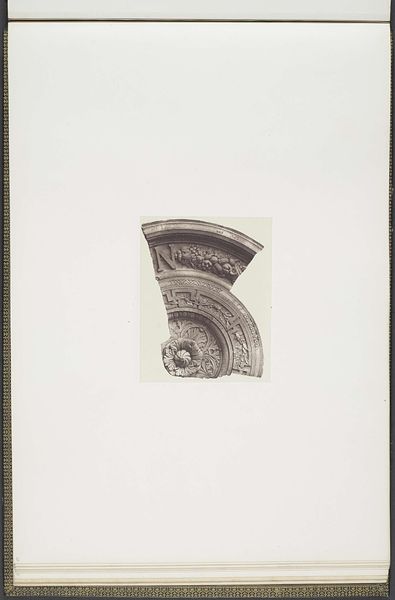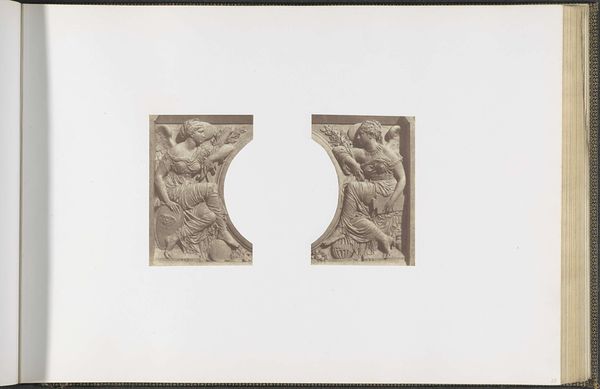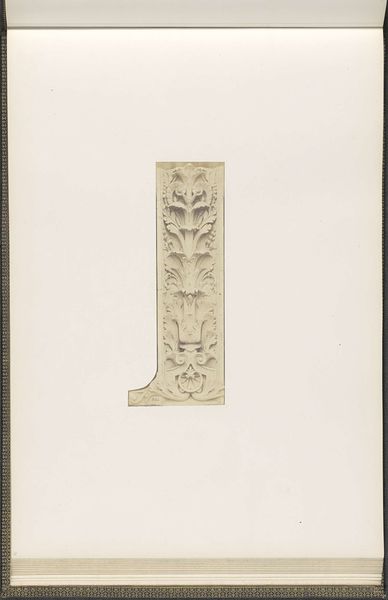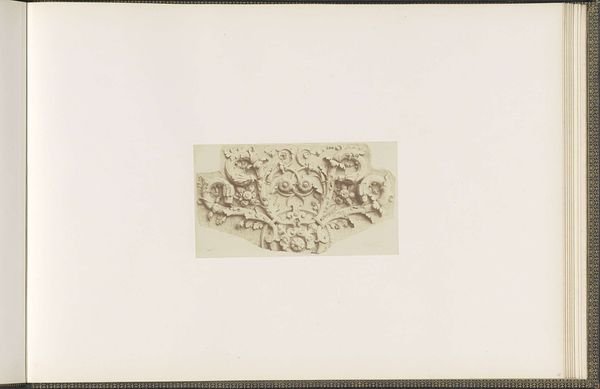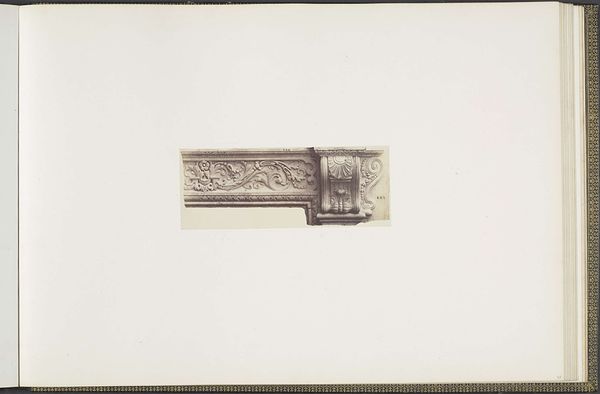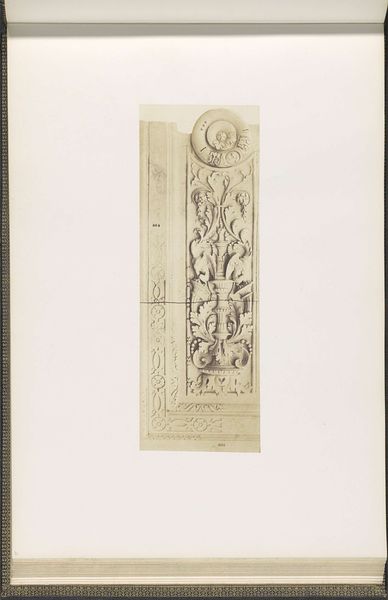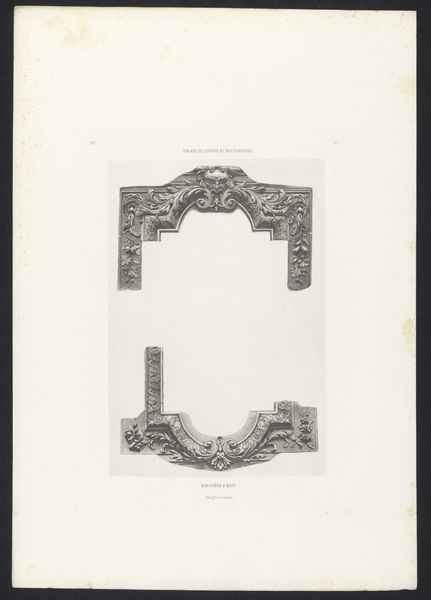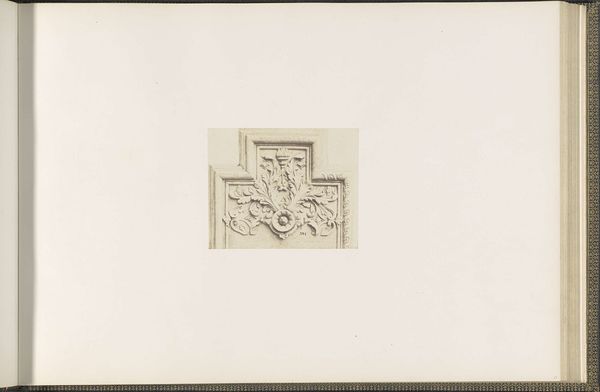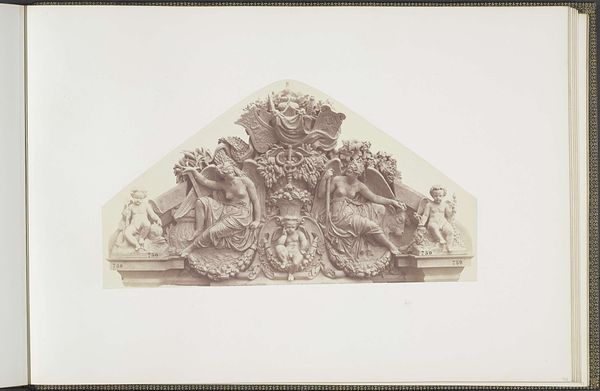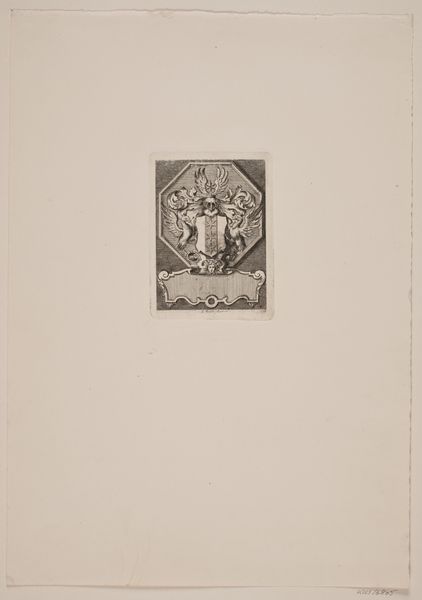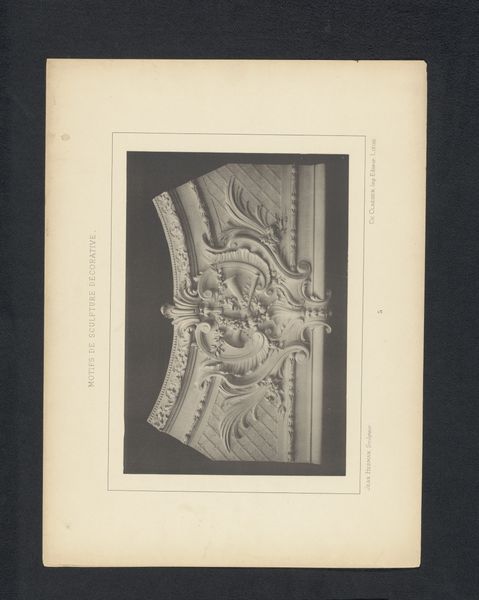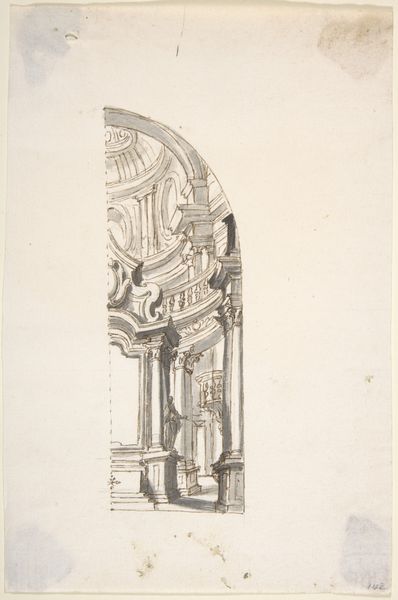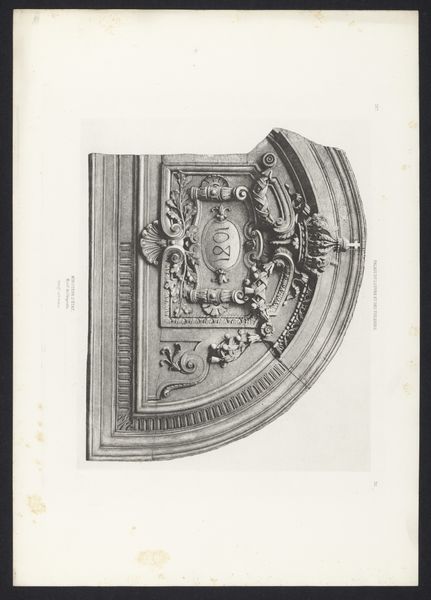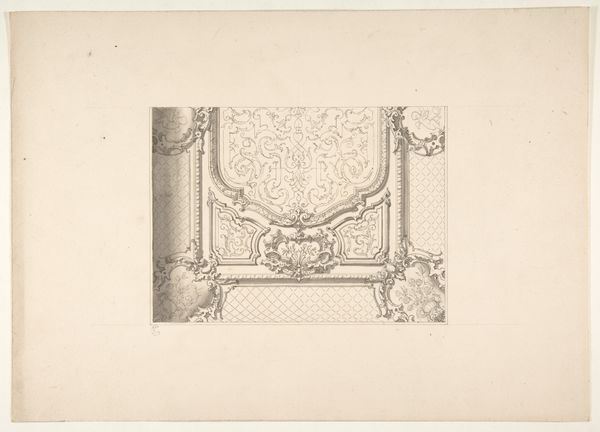
Detail van een gipsmodel voor de versiering van de zolderverdieping van het Pavillon de Turgot c. 1855 - 1857
0:00
0:00
print, photography
#
neoclacissism
# print
#
photography
#
history-painting
#
academic-art
Dimensions: height 378 mm, width 556 mm
Copyright: Rijks Museum: Open Domain
Curator: Looking at this albumen silver print by Édouard Baldus, created between 1855 and 1857, you get a photographic rendering of a plaster model, intended for the decoration of the attic of the Pavillon de Turgot. Editor: It feels almost archaeological, like a fragment unearthed. There's a stark beauty in its incompleteness, and I am immediately drawn to the texture rendered so exquisitely by the photograph. You can almost feel the coolness of the plaster. Curator: Precisely. Consider the materiality here: plaster, a readily available material, used to mock up grand architectural elements. The photograph flattens and memorializes that labor and that decision. How everyday materials can become aspirational elements in the language of academic art. It speaks to class, no? The Pavillon was for the wealthy, but made possible through the manipulation of the modest materials and skilled artisans. Editor: Absolutely. And it showcases the politics of imagery during that time, especially with Napoleon III's vision for a "New Paris." Photography was crucial in documenting and promoting these urban transformations. Baldus' work not only preserved the design but also participated in shaping public perception and reception of the Empire's ambitious projects. Do you suppose these models offered commentary as well, an attempt at influence? Curator: Baldus secured many government commissions—so while the photograph provides a glimpse into artistic and architectural decisions, it's undoubtedly presented through a state-approved lens, so to speak. These photographs reinforced the image of progress, highlighting the Empire’s ambition, and also cementing Baldus’ career. How are art-making, consumption, and politics colliding and colluding here? Editor: A fascinating dance of form and function, power and promotion! It's tempting to get caught up in its classical allure. Curator: The contrast—grand designs realized in base materials like plaster then captured by newly-important photography—raises intriguing questions about production and value in art. The photo is not only documentation; it's also now an object of artistic and historical worth. Editor: Ultimately, by viewing Baldus' print, we consider the complex interplay of social, political, and aesthetic considerations inherent to artistic creation and preservation. Thank you. Curator: Indeed, and in thinking about it, we’ve underscored the crucial role that materiality and making play in shaping our understanding of architectural ambition and imperial display.
Comments
No comments
Be the first to comment and join the conversation on the ultimate creative platform.
